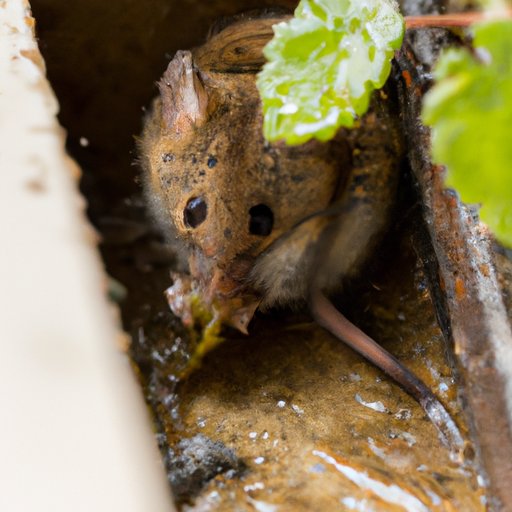Introduction
Dealing with mice infestations can be a frustrating and worrisome problem for homeowners. Not only can mice cause damage to your property and belongings, but they can also pose health risks to you and your family. Fortunately, there are many natural solutions to getting rid of mice that are both effective and safe to use.
Natural mouse repellents
One option for getting rid of mice naturally is to use natural repellents. Some of the most popular natural repellents include peppermint oil, cloves, and ultrasonic repellents. Peppermint oil has a strong scent that mice find unpleasant and can be used by soaking cotton balls in the oil and placing them around your home. Cloves, which have a similar scent to peppermint, can also be used in similar ways. Ultrasonic repellents emit high-pitched noises that are only audible to rodents and can be plugged into an electrical outlet.
To use natural repellents effectively, you should place them in areas where mice are most likely to enter your home, such as near cracks and gaps in walls and floors. It’s important to note that while natural repellents can be effective, they may not work as quickly as chemical repellents.
Mouse-proofing your home
To make your home less attractive to mice, mouse-proofing is another key step to consider. This involves taking measures to keep mice from entering your home, such as sealing cracks and gaps in walls and floors, getting rid of clutter, and cleaning food storage areas. Seal cracks and gaps in your home with caulk or steel wool. In addition, make sure that all food is kept in sealed containers and that garbage is disposed of properly and regularly.
Carrying out these steps is relatively easy and can be done over the course of a weekend. Regular maintenance is essential to keep your home mouse-free, so it’s important to stay on top of these tasks.
DIY mouse traps
If you’re looking for a humane way to trap mice, there are DIY options available. These include using a soda bottle or cardboard tube trap, which you can build using household items. With a soda bottle, you cut off the top and invert it into the bottom, making a funnel leading into the bottle. Bait is placed inside, and the mouse falls in but can’t climb back out. The cardboard tube trap is constructed similarly, with bait at one end and a bucket filled with water at the other. When the mouse enters the tube and reaches for the bait, it falls into the water.
Once you have caught a mouse, it’s important to release it safely and ethically. Choose a location that’s at least a few miles away from your home, where it can’t easily find its way back. Be sure to handle the mouse gently and only release it in an area where it won’t cause harm to people or other animals.
Natural predators
Another natural solution for dealing with mice is to use natural predators, such as cats, snakes, or birds of prey. While cats are the most commonly used natural predator, both snakes and birds of prey can also be effective at controlling mice populations. However, there are pros and cons to each approach; cats require care and attention, while snakes may cause fear or discomfort, and birds of prey require specialized equipment and training.
To attract and care for natural predators, you’ll need to provide suitable habitats and food. For cats, this means providing shelter and regular feedings. For snakes, this means providing a safe, enclosed space with proper heating and lighting. For birds of prey, you’ll need to provide a specialized perch and plenty of space to fly and hunt.
Signs of infestation and prevention
Identifying early signs of mice infestations is the first step in preventing them from happening. Common signs of infestation include droppings, chew marks, and evidence of nesting. To prevent mice infestations, one must seal entry points and remove food sources. This includes sealing cracks and gaps, removing any food that may be sitting out, and storing food in sealed containers. It’s also important to keep your home clean and free of clutter.
If you suspect that you have a mouse infestation, it’s important to act quickly. Call a professional exterminator or trap and release the mice yourself. The longer you wait, the more likely it is that the infestation will spread. Regular preventative maintenance is critical to keeping mice out of your home for good.
Conclusion
Getting rid of mice naturally is a practical and effective way to protect your home and your family. Natural repellents, mouse-proofing, DIY traps, natural predators, and preventative measures are all effective ways to control mouse populations and keep them out of your home. With these strategies in mind, you can enjoy a mouse-free home all year long.
